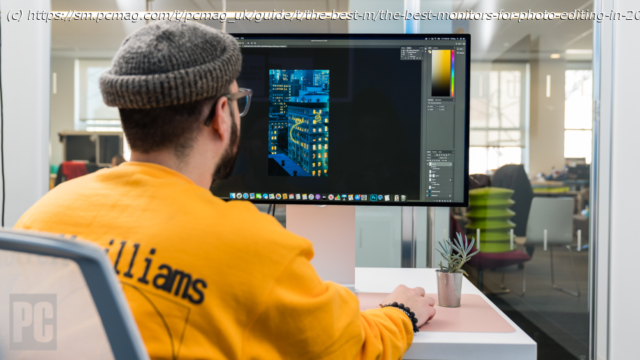Whether you’re a creative pro, an amateur enthusiast, or a student learning the trade, here’s how to shop for a display to use for photo work—plus the top picks from our lab-tested reviews.
Shopping for a panel for painstaking photo work? Photographers and other graphic and multimedia artists—whether professionals, students, or enthusiasts—are concerned with translating what’s on the screen to a print, a photo book, or a web site with accurate color reproduction, and they have their own set of priorities and wants in a monitor. Whether you spend all day in Adobe Photoshop and other, similar creative applications for a living, or just tinker with landscape photos in your spare time, buying the right display for color-correct work will pay off many times over, versus simply snagging the seemingly nicest panel on sale at your local electronics mart. Color accuracy, and understanding the technical terms and specs around it, are the keys to buying the best photo editing monitor for how you work. There is no single best monitor for photography; it depends on whether you’re a graphics pro or just dabbling, and what the ultimate destination for your photos is. But with our help, you can find the right fit for your budget, and for what you do with your images after they leave your camera. First, Some General Guidelines Wide-gamut monitors, which let you select from a palette of more than a billion colors, are the cat’s meow when it comes to photography, although it is important that they adequately cover the particular color space(s) that you will be using. If you’re working with a 14-bit or 16-bit RAW file, you’ll want to get a display that can show you the subtleties contained within each image you capture. Nowadays, a digital connection such as DisplayPort, Thunderbolt 3 (with Thunderbolt 4 on the way), USB-C (typically carrying a DisplayPort signal), or DVI is standard, but you will want to match up your panel with the output of your PC or Mac. Look for a display with an in-plane switching (IPS) panel and least an 8-bit lookup table (LUT); it will be able to pull images from a palate of 16.7 million colors. (More about IPS and screen types in the next section.) Moving to a top-end panel with a 10-bit LUT expands that number to more than a billion—generally speaking. To achieve that number, though, you’ll need a high-end display designed for photographers, but be prepared to pay premium dollars. Screen Technology: IPS Rules The vast majority of LCD panels geared toward photographers and graphic artists use IPS technology. IPS has several advantages over other commonly used LCD hardware technologies such as twisted nematic (TN) and vertical alignment (VA). It offers wide viewing angles (up to 178 degrees for both vertical and horizontal); these are the maximum angular distance from looking in front of a screen to looking from the side (or above) without a change of brightness or shift in colors. IPS displays tend to have better viewing angles than VA panels, and much better than TN panels. Also, IPS panels are known for having the most accurate colors of the three. IPS panels in monitors designed for creative professionals tend to have higher color depth (up to 10 bits; these are the panels that can chose from a palette of more than a billion colors) than most TN or VA displays, and support a wider color gamut, often covering all—or nearly all—of the Adobe RGB and DCI-P3 color spaces. VA panels may cover the sRGB space but not much more, and TN displays have even more limited color coverage. For now, at least, IPS panels rule the roost when it comes to photo editing, though it may not be that way forever. One promising technology is organic light-emitting diode (OLED), which seems to do well at displaying colors, but is quite expensive. OLED is used mostly on select laptop screens and on smartphones, but it hasn’t made much of an inroad into standalone monitors—yet. How to Assess Color Spaces and Color Coverage A color space is a defined range of colors. An important factor in evaluating a professional monitor to be used in photo editing is determining which specific color spaces you will be working in, and what percentage of colors in a given color space the monitor is capable of showing. Common color spaces cited in display manufacturers’ specs include sRGB, Adobe RGB, DCI-P3, NTSC, and Rec.709. Photographers will be most interested in sRGB and Adobe RGB, as they were developed with photos and still images in mind.






